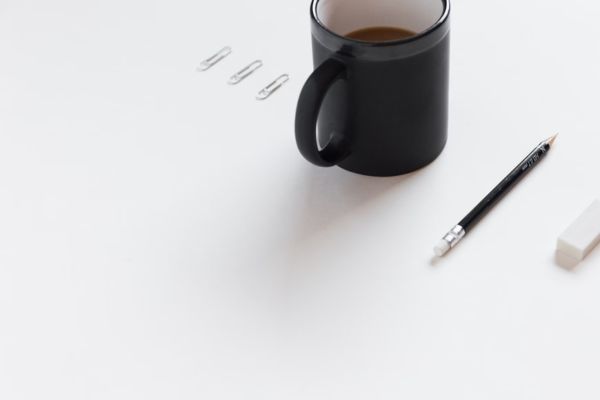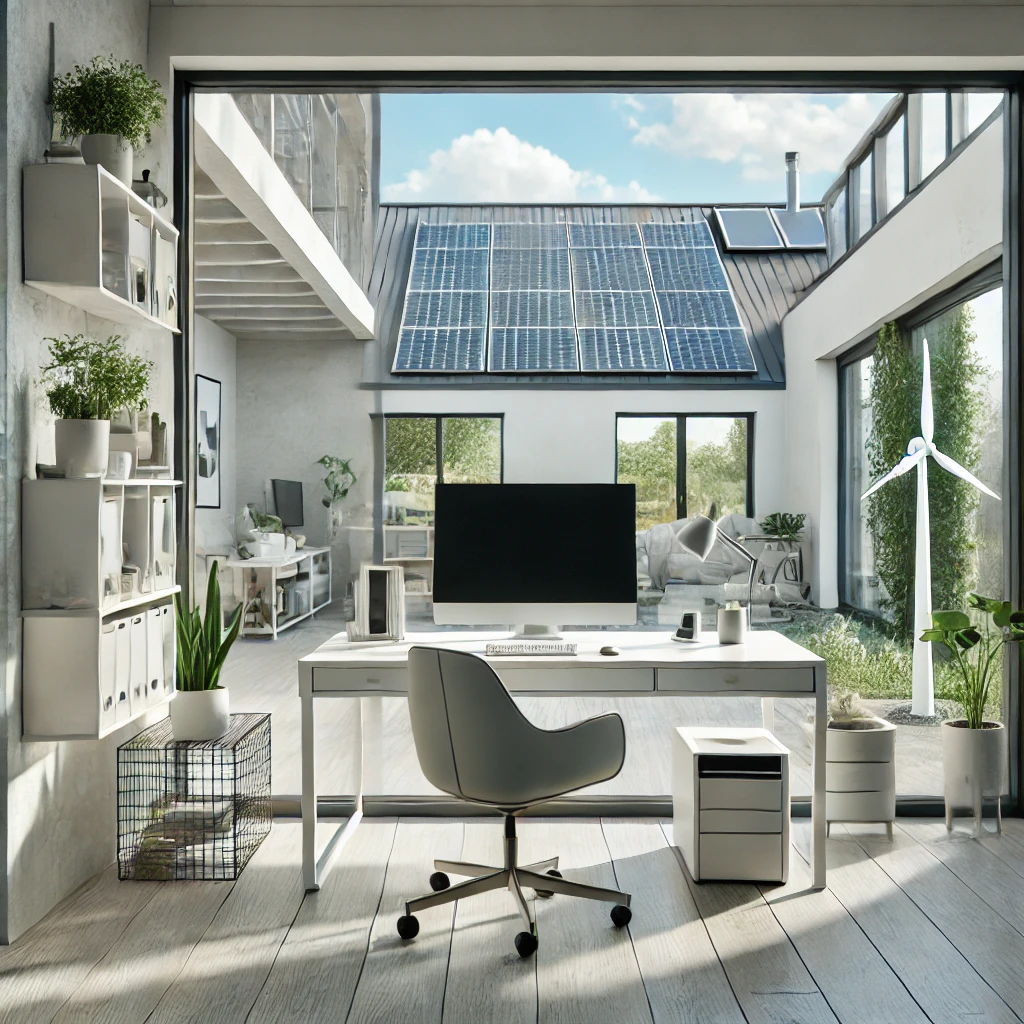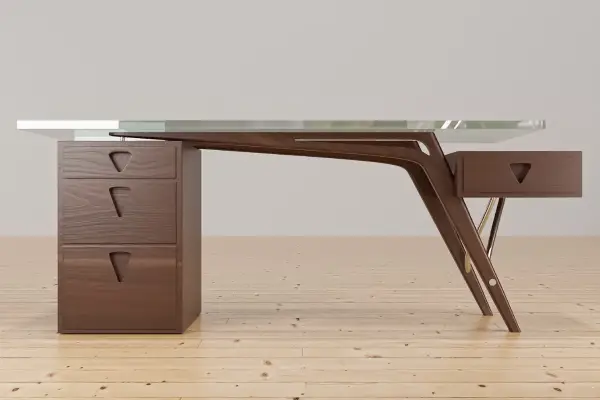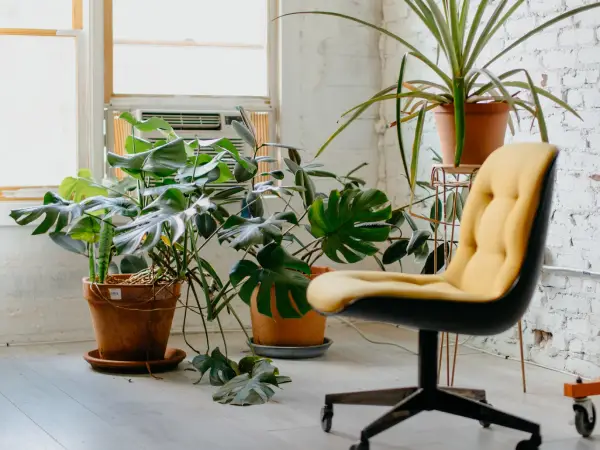Decluttering Office Supplies
Steps to Declutter Effectively
Decluttering your office supplies is a crucial step toward achieving a minimalist workspace. Here are some practical steps to help you declutter effectively:
Start with a Clean Slate:
-
- Empty Your Workspace: Begin by removing all items from your desk, drawers, and shelves. This helps you see everything you have and provides a blank canvas for reorganizing.
- Clean the Area: Take the opportunity to clean your workspace thoroughly. Dust and wipe down surfaces to create a fresh, inviting environment.
Categorize and Prioritize Supplies:
-
- Group Similar Items: Sort your office supplies into categories, such as writing tools, paper products, electronic gadgets, and office accessories. This makes it easier to evaluate what you have.
- Prioritize Essentials: Within each category, identify the most frequently used and essential items. These are the supplies that directly contribute to your daily tasks and productivity.
Implement the “One In, One Out” Rule:
-
- Maintain Balance: For every new item you bring into your office, commit to removing an old one. This rule helps prevent future clutter and ensures that your workspace remains organized.
- Be Selective: Before acquiring new supplies, consider if they are necessary and if they will replace an existing item.
Tips for Letting Go of Non-Essential Items
Letting go of non-essential items can be challenging, but it is essential for maintaining a minimalist workspace. Here are some tips to help you make the process easier:
Evaluate Usefulness:
-
- Frequency of Use: Ask yourself how often you use each item. If you haven’t used something in the past six months, it’s likely non-essential.
- Purpose and Function: Consider the purpose and function of each item. If it doesn’t serve a specific and useful role in your work, it’s time to let it go.
Avoid Emotional Attachments:
-
- Practicality Over Sentiment: Focus on practicality rather than sentimentality. While it’s natural to have emotional attachments to certain items, prioritize keeping what enhances your productivity and efficiency.
- Memories, Not Clutter: If an item holds sentimental value, consider storing it elsewhere or taking a photo of it as a keepsake instead of keeping it in your workspace.
Donate or Recycle:
-
- Donate Usable Items: If you have supplies that are still in good condition but no longer needed, consider donating them to schools, charities, or colleagues who might benefit from them.
- Recycle Responsibly: For items that are no longer usable, recycle them responsibly. This helps reduce waste and supports environmentally friendly practices.
Stay Committed:
-
- Regular Decluttering: Make decluttering a regular habit. Set aside time monthly or quarterly to review and reassess your office supplies.
- Mindful Acquisition: Be mindful of what you bring into your workspace. Only acquire items that are truly necessary and will contribute positively to your work.
By following these steps and tips, you can effectively declutter your office supplies, creating a more organized, functional, and minimalist workspace. The next section will discuss choosing the right storage solutions to maintain this decluttered environment and further enhance your office’s efficiency and aesthetic.
Choosing the Right Storage Solutions
Selecting the right storage solutions is vital for maintaining a minimalist workspace. Proper storage not only helps keep your office supplies organized but also ensures that your workspace remains clean, functional, and aesthetically pleasing. Here are some effective storage solutions for a minimalist office:
Types of Storage Solutions for a Minimalist Office
Desk Organizers:
-
- Purpose: Desk organizers help keep frequently used items within easy reach while maintaining a tidy desktop.
- Types: Consider using small trays, pen holders, and document organizers to sort and store essential supplies like pens, notepads, and paperwork.
- Tip: Choose organizers with clean lines and simple designs that align with minimalist aesthetics.
Shelving Units:
-
- Purpose: Shelving units provide additional storage space without cluttering your desk. They can hold books, binders, decorative items, and other supplies.
- Types: Floating shelves, wall-mounted shelves, and modular shelving systems are great options for a minimalist office.
- Tip: Keep shelves organized and avoid overloading them. Use decorative boxes or bins to store smaller items neatly.
Drawer Dividers:
-
- Purpose: Drawer dividers help you organize and separate different types of office supplies within drawers, making it easy to find what you need.
- Types: Adjustable dividers, tray inserts, and custom-fit organizers can be used to create designated spaces for pens, paper clips, sticky notes, and other small items.
- Tip: Measure your drawers before purchasing dividers to ensure a proper fit and maximize space.
Labeling Systems:
-
- Purpose: Labels help identify the contents of storage containers, shelves, and drawers, making it easier to locate items quickly.
- Types: Use simple, clear labels for files, boxes, and organizers. Consider using a label maker for a consistent and professional look.
- Tip: Keep labels minimal and avoid overly detailed descriptions. Use keywords or icons to indicate contents.
Criteria for Selecting Appropriate Storage Solutions
When choosing storage solutions for your minimalist office, consider the following criteria to ensure they meet your needs and align with minimalist principles:
Functionality:
-
- Purpose-Driven: Ensure that each storage solution serves a specific purpose and meets your organizational needs. Avoid adding unnecessary items that don’t contribute to functionality.
- Ease of Use: Select storage solutions that are easy to use and access. Complicated or cumbersome systems can hinder efficiency and lead to frustration.
Aesthetic Alignment with Minimalist Principles:
-
- Clean Lines: Choose storage solutions with clean lines and simple designs that complement a minimalist aesthetic. Avoid overly ornate or decorative items.
- Neutral Colors: Opt for neutral colors like white, black, gray, or natural wood tones. These colors create a calm and cohesive look, reducing visual clutter.
- Consistency: Maintain consistency in your storage choices. Using similar styles and materials for different storage solutions creates a unified and harmonious appearance.
By carefully selecting storage solutions that are both functional and aesthetically aligned with minimalist principles, you can create an organized, efficient, and visually pleasing workspace. In the next section, we will discuss how to organize supplies based on their frequency of use, further enhancing the functionality of your minimalist office.
Organizing Supplies by Frequency of Use
To maintain an efficient and clutter-free minimalist workspace, it’s essential to organize your office supplies based on how frequently you use them. This approach ensures that the items you need most often are readily accessible, while less frequently used supplies are stored in a way that keeps your workspace tidy. Here’s how to categorize and store your supplies by frequency of use:
Daily Use Items
Keep Within Easy Reach:
- Daily use items should be easily accessible without causing clutter. These are the supplies you use multiple times throughout your workday, and having them within arm’s reach enhances efficiency and productivity.
Examples and Suggestions:
- Pens and Pencils: Store these in a pen holder or desk organizer on your desk.
- Notepad or Planner: Keep these items on your desk or in a designated drawer for quick access.
- Sticky Notes: Place a small stack on your desk or in a drawer organizer.
- Computer Accessories: Keep your mouse, keyboard, and frequently used cables neatly arranged on your desk.
- Water Bottle or Coffee Mug: Have a designated spot for your drinkware that is easy to reach but doesn’t clutter your workspace.
Weekly Use Items
Store Nearby but Out of the Way:
- Weekly use items should be accessible but not necessarily within immediate reach. These are supplies you use a few times a week, so storing them slightly away from your primary work area helps maintain a clean desk surface.
Examples and Suggestions:
- Files and Documents: Use a file organizer or a filing cabinet placed near your desk. Consider color-coding or labeling folders for easy identification.
- Reference Books or Manuals: Store these on a nearby shelf or in a cabinet. Arrange them vertically for easy retrieval.
- Spare Office Supplies: Keep extra pens, paper, and other supplies in a drawer or a storage box on a shelf.
- Personal Items: Items like personal care products or snacks can be stored in a drawer or a small box under your desk.
Occasional Use Items
Store in Less Accessible Areas:
- Occasional use items are those you rarely need but still want to keep on hand. These items can be stored in less accessible areas to keep your primary workspace uncluttered.
Examples and Suggestions:
- Archived Files: Store old documents and files in a filing cabinet or storage boxes. Label them clearly and keep them in a closet or under your desk.
- Rarely Used Electronics: Store items like external hard drives, extra cables, and backup devices in a drawer or a storage box.
- Seasonal Items: Items used only during specific times of the year, like holiday decorations or seasonal office supplies, can be stored in high shelves or in a closet.
- Specialty Tools: Tools or equipment used for specific tasks can be kept in a designated drawer or storage box that is not immediately within reach.
By organizing your supplies based on how frequently you use them, you can maintain a tidy, efficient, and functional minimalist workspace. Daily use items are kept within easy reach to enhance productivity, weekly use items are stored nearby but out of the way to keep your desk clear, and occasional use items are stored in less accessible areas to prevent clutter. This approach ensures that your workspace remains organized and conducive to focus and creativity. In the next section, we will discuss implementing a maintenance routine to keep your office consistently decluttered and efficient.
Personalizing Your Minimalist Office Supply Organization
Creating a personalized yet minimalist workspace involves adding touches that reflect your personality without compromising on simplicity and organization. Here’s how to achieve a balance between personal expression and a clutter-free environment:
Adding Personal Touches Without Creating Clutter
Choosing Meaningful and Functional Items:
- Select Multi-Functional Items: Choose office supplies and decor that serve more than one purpose. For example, a stylish pen holder that also functions as a paperweight.
- Display Personal Items Thoughtfully: Limit personal items to a few meaningful pieces, such as a small photo frame or a memento. These items should be carefully chosen and positioned to avoid cluttering your workspace.
Incorporating Aesthetics into Supply Organization:
- Consistent Color Scheme: Use a consistent color scheme for your office supplies and storage solutions. Neutral tones like white, black, and gray, or a single accent color, can create a cohesive and visually appealing look.
- Matching Organizers: Choose matching organizers and storage containers. Uniformity in design helps maintain a clean and orderly appearance.
Simple and Elegant Design Choices
Minimalist Decor:
- Art and Plants: Incorporate simple artwork or a small plant to bring life to your space. Opt for clean lines and minimalist frames for artwork, and choose plants that are easy to maintain and don’t take up too much space.
- Sleek Accessories: Select sleek, modern office accessories. For example, a minimalist desk lamp, a stylish clock, or elegant bookends can add a touch of sophistication without overwhelming your desk.
Balancing Function and Form:
- Functional Beauty: Ensure that each item in your workspace is not only aesthetically pleasing but also serves a practical purpose. For instance, a beautiful notebook that you actually use regularly, or a designer storage box that holds essential supplies.
- Organized Displays: Display items in an organized manner. Use trays or shallow boxes to group similar items together, keeping your desk tidy while showcasing your personal style.
By following these guidelines, you can personalize your minimalist office supply organization in a way that adds character and charm without sacrificing the simplicity and functionality of your workspace. The key is to choose items that are both meaningful and functional, and to make design choices that enhance the overall aesthetic while maintaining order. This balanced approach ensures that your workspace remains a place of productivity, creativity, and personal comfort.
Common Pitfalls to Avoid
When organizing office supplies in a minimalist workspace, it’s important to be mindful of potential pitfalls that can disrupt your organization and clutter-free environment. Here are some common pitfalls to avoid:
Over-Accumulating Supplies
Temptation to Stockpile:
- Avoiding Unnecessary Purchases: It’s easy to fall into the trap of buying office supplies in bulk or accumulating items “just in case” they might be needed. However, this can quickly lead to clutter and overfilled storage spaces.
- Stick to Essentials: Focus on keeping only the supplies that you use regularly. Before purchasing new items, assess whether they are truly necessary and will contribute to your productivity.
Periodic Purging:
- Regular Inventory Checks: Conduct regular checks of your supplies to identify and remove items that are no longer needed. This helps prevent the buildup of unused and unnecessary supplies.
- Donation and Recycling: Donate or recycle excess supplies instead of storing them indefinitely. This not only reduces clutter but also supports sustainability.
Overcomplicating Storage Solutions
Simplicity is Key:
- Avoiding Complex Systems: While it may be tempting to invest in elaborate storage solutions, overly complex systems can be difficult to maintain and may not serve your needs effectively.
- Opt for Simple Solutions: Choose simple, straightforward storage options that are easy to use and maintain. For example, clear drawer dividers, labeled bins, and basic shelving units.
User-Friendly Organization:
- Ease of Access: Ensure that your storage solutions allow for easy access to frequently used items. Complicated systems can hinder efficiency and lead to frustration.
- Consistency in Design: Maintain consistency in your storage choices to create a cohesive and orderly appearance. This makes it easier to find and store items.
Neglecting Regular Maintenance
Importance of Routine:
- Daily Habits: Develop daily habits that support a clutter-free workspace, such as a quick end-of-day cleanup routine. This prevents small messes from turning into major clutter.
- Weekly and Monthly Maintenance: Schedule regular maintenance checks to reassess and reorganize your supplies. This helps keep your workspace in order and prevents the accumulation of unnecessary items.
Staying Committed:
- Consistent Effort: Maintaining a minimalist workspace requires ongoing effort and commitment. Stay vigilant about keeping your office organized and free from clutter.
- Adapting to Changes: As your work and needs evolve, be willing to adapt your organization systems. Regularly reassess your setup to ensure it continues to meet your needs effectively.
By being mindful of these common pitfalls, you can maintain an organized, efficient, and clutter-free minimalist workspace. Avoid over-accumulating supplies, opt for simple and functional storage solutions, and commit to regular maintenance to keep your office in optimal condition. This approach ensures that your workspace remains a productive and inspiring environment.
Conclusion
Creating and maintaining a minimalist office supply organization system is not just about decluttering—it’s about creating a workspace that enhances productivity, clarity, and creativity. By implementing thoughtful strategies and avoiding common pitfalls, you can achieve a workspace that is both functional and visually appealing. Let’s recap the essential tips and strategies discussed:
- Start with Decluttering: Begin by assessing your current office supplies, identifying essentials versus non-essentials, and understanding the impact of clutter on your work efficiency.
- Organize by Frequency of Use: Arrange your supplies based on how often you use them—keeping daily use items within easy reach, storing weekly use items nearby but out of the way, and placing occasional use items in less accessible areas.
- Choose the Right Storage Solutions: Select storage solutions that are functional, align with minimalist principles, and enhance the overall aesthetic of your workspace.
- Implement a Maintenance Routine: Develop daily, weekly, and monthly habits to keep your workspace organized. Regularly reassess your supply needs and adjust your organization system as necessary.
- Personalize Thoughtfully: Add personal touches that reflect your style without creating clutter. Choose meaningful and functional items that contribute positively to your workspace.
Encouragement to Start and Maintain a Minimalist Office Supply Organization System
Embarking on the journey to create a minimalist office supply organization system may seem daunting at first, but the benefits far outweigh the effort. A well-organized workspace promotes focus, reduces stress, and increases overall efficiency. Start small, tackle one area at a time, and celebrate each step toward a clutter-free environment. Remember, consistency is key to maintaining your minimalist workspace over time.
Final Thoughts on the Benefits of an Organized, Minimalist Workspace
Maintaining an organized, minimalist workspace not only improves your productivity but also fosters a sense of calm and clarity. With fewer distractions and a clear space to think and create, you can approach your work with renewed energy and purpose. Embrace the principles of minimalism—simplicity, functionality, and intentional living—and enjoy the benefits of a workspace that supports your professional and personal growth.
By following these tips and staying committed to maintaining your minimalist office, you can create a workspace that inspires productivity and reflects your unique style. Here’s to a clutter-free, organized, and thriving workspace!






